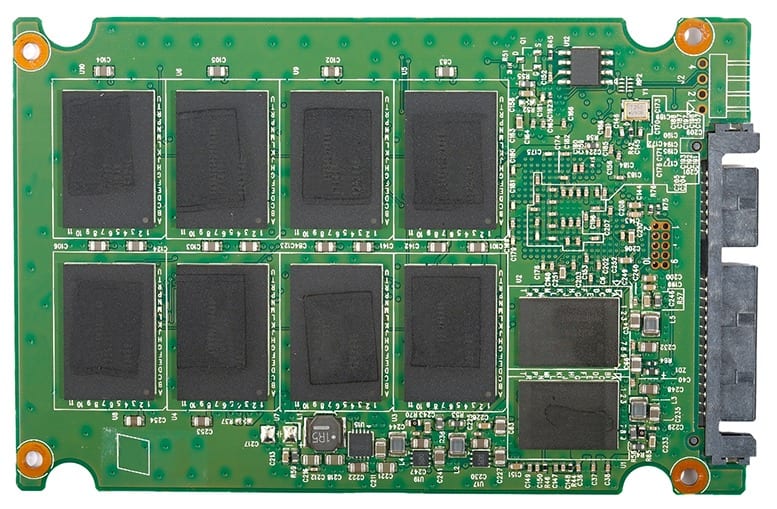If you’re thinking of upgrading your computer or buying a new external hard drive, there are many things to consider first. One of these considerations is the type of hard drive you want. A hard drive is where you store your operating system and data on your computer. You can also get an external hard drive that lets you store your data and take it with you wherever you go. But should you choose a traditional hard disk drive or are you better off with a solid-state drive? Here’s everything you need to know about the difference between an HDD and an SSD in terms of speed, performance, and price.
What is an HDD?

A hard disk drive (HDD) uses magnetic disks (or platters) to store data. An arm sits on top of these platters and reads and writes data as the disks spin at speeds of thousands of RPM (revolutions per minute). The speed that these platters spin, among other factors, will affect how well your hard drive performs.
Typically, HDDs can store between 40GB (gigabytes) to 16TB (terabytes) or higher. Many hard drives in computers connect to the motherboard of the computer with a SATA III connection these days. This type of connection affects a hard drive’s performance as well.
What is an SSD?

Unlike an HDD, an SSD has no moving parts. It is made up of flash memory chips, which only have a limited amount of write cycles. This means you can only store data on an SSD between 3,000 and 100,000 times. The more chips an SSD has, the more storage capacity it has, and the longer it will last.
Solid-state drives can come with terabytes of storage space, but they only typically have between 120GB and 512GB, especially internal drives. SSDs can also use a SATA III connection, but many also have PCIe or M.2 connections to the computer’s motherboard.
SSD vs HDD Speed
Hard drive speeds are measured in megabytes per second or MBps. There are several factors that affect SSD vs HDD speeds.
The RPM of an HDD’s platter determines how fast you can read and write data. The higher the RPM, the faster the hard drive will be. The RPM rate of most hard drives ranges from 5,400 to 15,000. A SATA III data connection is capable of a maximum of 600MBps transfer rate, but the RPM of the HDD determines the final output. A hard drive with a 5,400 RPM will have a speed of around 100MBps. On the other hand, an HDD with 7,200 RPM will have speeds of around 150MBps.
That means it would take you 40 minutes to an hour to transfer 50GB of data using an HDD
An SSD, on the other hand, has no RPM to consider since it doesn’t have moving parts. With a SATA III connection, an SSD can read data at 550MPbs and write at 520MBps. Speeds, however, will max out at 600MBps as this is the maximum transfer capacity of a SATA III connection.
That means it would only take around 15 minutes to transfer 50GB of files with an SSD.
If, however, you use an M.2 or PCIe connection between your SSD and your motherboard, speeds can go as high as 1.4GBps. That means you could transfer 50GB of data in less than 5 minutes.
SSDs are also faster when it comes to application open times. For example, you can open a 400MB TIF file on Photoshop CS5.1 in 8.4 seconds with an SSD. If you have an HDD, it would take 25.9 seconds – more than three times longer, according to GamingScan.
Is SSD Better than HDD?

While an SSD is faster than an HDD, a traditional hard disk drive is cheaper and lasts longer. So, it all depends on what you want to use them for. It is best to use an HDD to back up all of your documents, movies, photos, and other files. Then you can use an SSD to run your operating system and programs as fast as possible.
While HDDs may not be as durable because of their moving parts, they tend to last longer as long as you don’t drop them. While an SSD can last up to 5 years, an HDD can remain operational for 10 years or more.
Additionally, if we consider cost, an HDD is easier on the pockets than an SSD. A 1TB HDD will only cost you $40 to $75. An SSD with the same capacity will set you back $100 to $200, depending on which model you choose.


